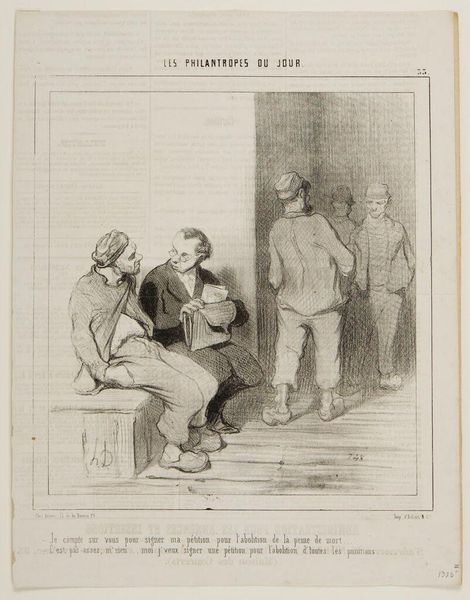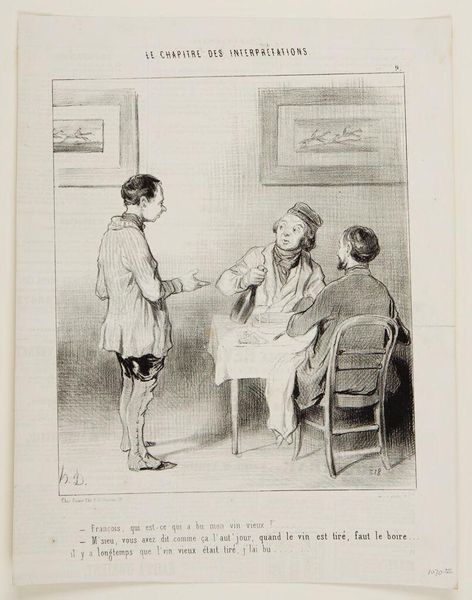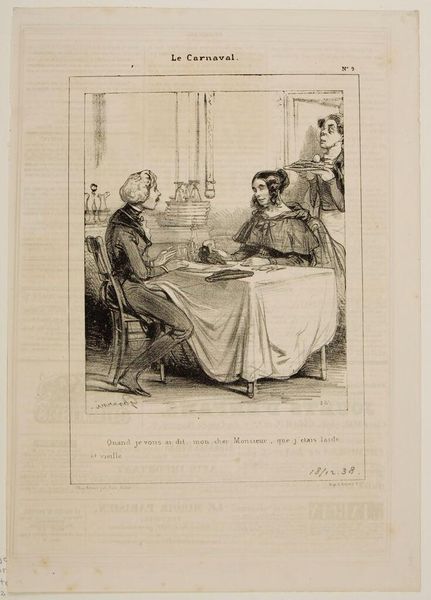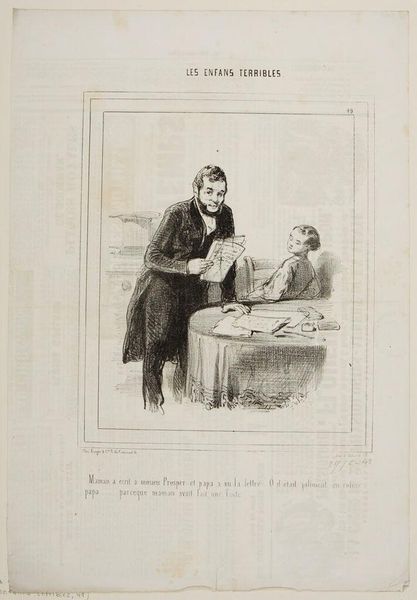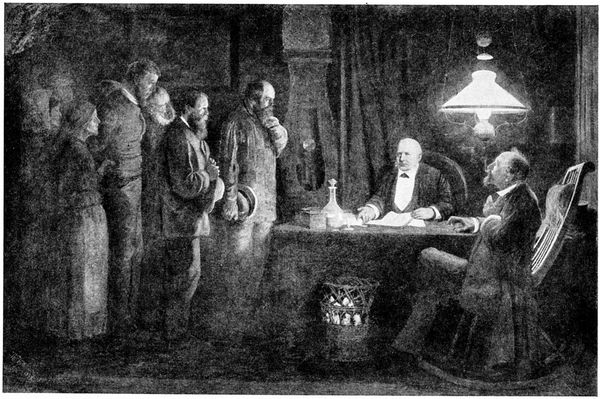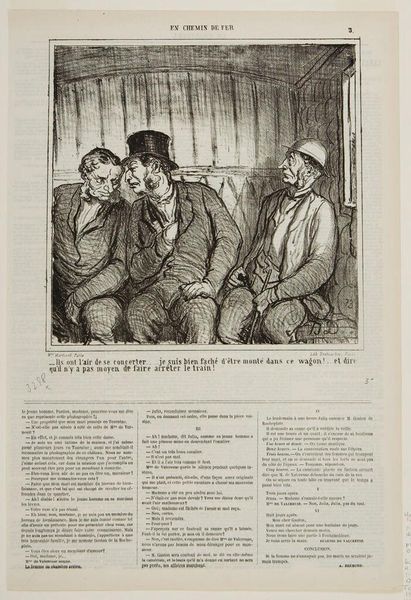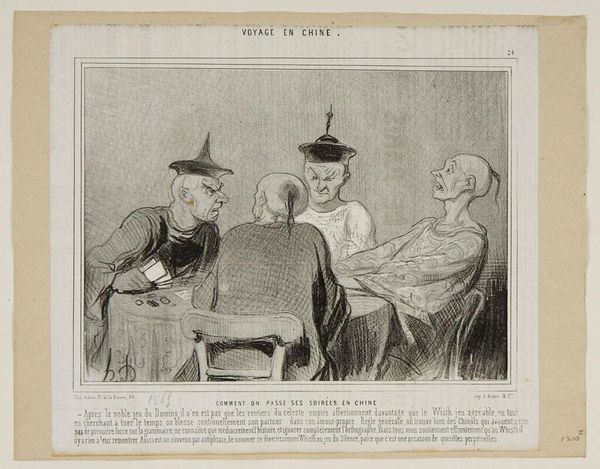
Copyright: CC0 1.0
Editor: This is "A Dinner for Both Sexes," a drawing by Charles Joseph Traviès de Villers. It looks like a bustling restaurant scene, with a mix of serious and perhaps comical characters. What underlying social commentary do you see in this composition? Curator: This work, created in a period of great social upheaval, offers a glimpse into Parisian dining culture. The inscription, detailing characters and behaviours, suggests a critical perspective on gender and social roles. How does the artist use satire to engage with the prevalent societal norms? Editor: That's interesting. So, it's more than just a scene; it's a commentary on social interactions. I hadn't considered the artist's role as a social critic. Curator: Exactly. This piece encourages us to delve into the artist's views on class, gender, and the performance of social identities. The setting is not merely a backdrop, but a stage for the enactment of social dramas. Editor: This has definitely changed how I see the image, from just a casual dinner to a deeper reflection of Parisian life. Curator: Indeed, art serves as a mirror reflecting the complexities of human experience, inviting us to analyze and challenge societal structures.
Comments
No comments
Be the first to comment and join the conversation on the ultimate creative platform.

